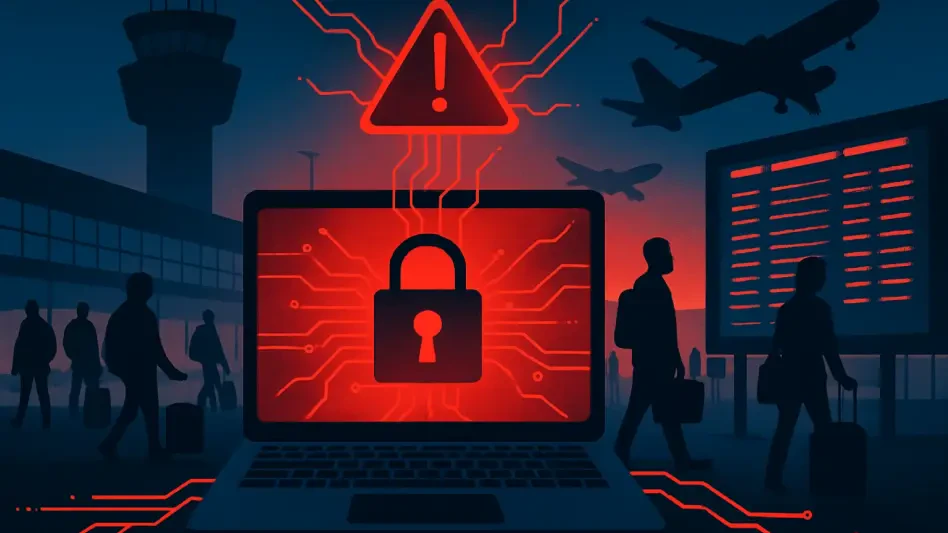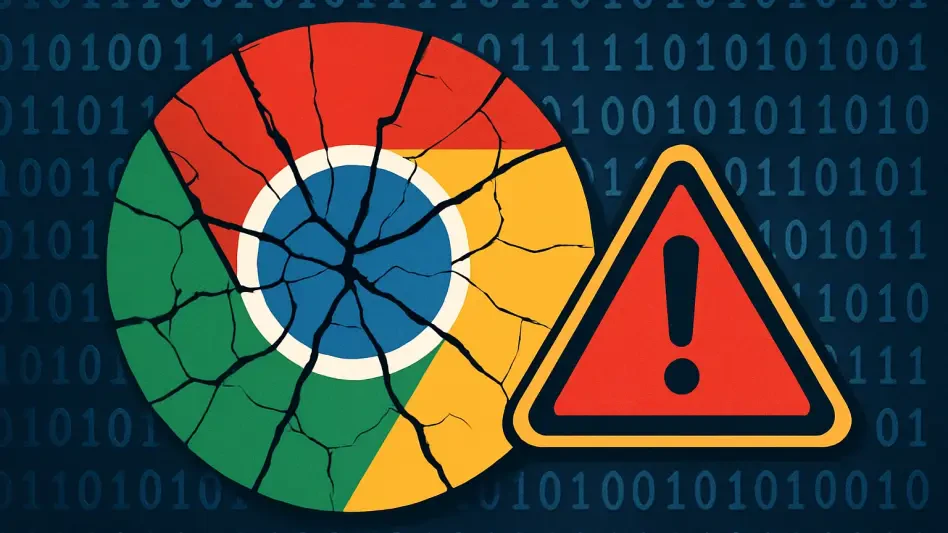What happens when the familiar voice over an airport loudspeaker turns from routine boarding calls into a platform for political propaganda? On a single day, travelers across four North American airports were stunned as hackers infiltrated public address systems, broadcasting controversial pro-Palestinian messages and sharp criticisms of global leaders, disrupting the calm of transit hubs and exposing glaring vulnerabilities in digital defenses. This unprecedented breach transformed airports into stages for geopolitical statements, leaving passengers and officials grappling with the fallout. The incident not only interrupted daily operations but also set the stage for a deeper look into cybersecurity in aviation.
A Shocking Intrusion in Airport Operations
The breach unfolded with audacious precision, catching airport staff and travelers off guard at Harrisburg International Airport in Pennsylvania, and Kelowna, Victoria, and Windsor International Airports in Canada. Instead of hearing updates on gate changes or flight delays, passengers were bombarded with unauthorized recordings praising Hamas and condemning figures like U.S. President Donald Trump and Israeli Prime Minister Benjamin Netanyahu. Social media quickly buzzed with clips of the chaos, capturing the confusion as chants like “Free Palestine” echoed through terminals and appeared on hacked flight display screens at Kelowna.
This wasn’t merely a disruption of sound; it was a calculated strike at the heart of airport communication systems. The coordinated nature of the messages across geographically distant locations hinted at a deliberate, possibly organized effort by hackers exploiting digital weak points. For millions who pass through airports annually, trusting in their safety and efficiency, this incident shattered a sense of normalcy, raising immediate concerns about what other systems might be at risk.
Why This Attack Matters to Everyone
Airports stand as symbols of security and order, places where systems are expected to function seamlessly to protect and inform the public. When hackers accessed PA systems and flight displays at these four locations, they didn’t just interrupt announcements—they undermined a fundamental trust. With cyberattacks on critical infrastructure rising—evidenced by a reported 30% increase in incidents targeting aviation networks from 2025 to the present, according to FBI data—this breach serves as a stark reminder of the fragility of interconnected digital systems in the face of evolving threats.
The implications extend beyond a single day’s disruption. Passenger confidence, already tested by past incidents like airline network breaches in the U.S. and Canada, takes another hit when core communication tools become weapons for political messaging. This event underscores a critical challenge for the aviation industry: balancing technological advancements with robust defenses against cyber threats that can turn routine operations into platforms for chaos.
Unpacking the Coordinated Cyber Strike
The attack revealed a chilling level of sophistication as hackers targeted specific vulnerabilities across the four airports. At Harrisburg International Airport, unauthorized audio blasted over loudspeakers with scathing remarks about political leaders, while in Kelowna, flight information screens flashed pro-Palestinian slogans alongside similar audio intrusions. Victoria International Airport pinpointed a flaw in cloud-based software as the entry point for the breach, whereas Windsor, though less affected due to lower traffic, still faced unauthorized images and sounds disrupting its systems.
Passenger reactions, captured in real-time posts online, painted a picture of bewilderment and unease as terminals became arenas for geopolitical rhetoric. The consistency of the content—supporting Hamas and criticizing specific figures—across all locations suggests not a random act, but a planned exploitation of digital infrastructure. This wasn’t a mere prank; it was a deliberate act that exposed how easily critical systems could be manipulated by those with malicious intent.
The scale of the breach varied, yet the impact was uniform in its ability to disrupt. While Windsor managed a quicker recovery due to fewer passengers, Harrisburg faced heightened scrutiny with immediate system shutdowns and precautionary flight searches. Each airport’s experience highlighted a shared vulnerability in communication technologies, often reliant on networked and cloud-based platforms, that hackers exploited with alarming precision.
Voices from the Ground and Official Responses
Airport authorities and travelers alike were left reeling from the unexpected intrusion, with reactions ranging from swift containment to deep-seated worry. Scott Miller, spokesperson for Harrisburg International Airport, confirmed the unauthorized access and detailed how the PA system was promptly disabled to halt the messages, alongside security sweeps of boarding flights that found no further threats. In Kelowna, staff resorted to old-fashioned megaphones for announcements, a stark contrast to the high-tech systems rendered unusable by the hack.
Passengers, meanwhile, voiced growing concerns about broader implications. Glen Brown, a traveler at Harrisburg, expressed a common fear: “If they can take over the speakers, what stops them from accessing other systems?” Such sentiments reflect a palpable anxiety among the public, amplified by the lack of immediate clarity during the incident. At Kelowna, many reported frustration over minimal updates as the situation unfolded, pointing to gaps in crisis communication.
Government officials also weighed in, signaling the gravity of the breach. U.S. Transportation Secretary Sean Duffy labeled the incident “unacceptable,” promising a comprehensive investigation into the security lapses at Harrisburg. Transport Canada mirrored this urgency, committing to collaborate with federal partners to prevent future disruptions. These responses, backed by recent reports of escalating cyberattacks on aviation, emphasize that digital security is now a cornerstone of public safety in air travel.
Bolstering Defenses Against Digital Threats
In response to this alarming breach, airports must prioritize actionable measures to safeguard their systems and restore public trust. Comprehensive audits of digital infrastructure are a critical first step, focusing on PA systems, flight displays, and cloud-based software—key areas exploited in this attack. Identifying and patching these vulnerabilities can prevent similar intrusions, while real-time monitoring tools and multi-factor authentication add layers of protection against unauthorized access.
Staff training also plays a pivotal role in strengthening defenses. Equipping employees with knowledge to recognize and respond to cyber threats ensures faster mitigation of breaches, reducing operational downtime. Additionally, clear crisis communication protocols are essential; the frustration voiced by passengers at Kelowna over poor updates highlights the need for transparent, immediate announcements—whether through digital or manual means—during disruptions.
Collaboration with federal agencies like the FAA, TSA, and Transport Canada offers a path to standardized cybersecurity protocols across borders. Such partnerships can address the rising tide of politically motivated “hacktivism,” as seen in this incident, by creating a unified strategy to protect aviation infrastructure. These measures collectively form a roadmap for resilience, ensuring that airports remain secure hubs in an increasingly digital world.
Reflecting on a Wake-Up Call
Looking back, the breach of PA systems at Harrisburg, Kelowna, Victoria, and Windsor International Airports stood as a jarring reminder of the vulnerabilities lurking within modern aviation infrastructure. The incident, marked by politically charged messages disrupting the daily flow of travel, left an indelible mark on passengers who witnessed their trusted transit hubs turned into platforms for propaganda. Authorities scrambled to contain the fallout, shutting down systems and launching investigations, but the unease among travelers lingered.
Moving forward, the aviation industry must commit to fortifying its digital defenses with urgency, investing in cutting-edge security technologies to outpace evolving cyber threats. Enhanced training for staff and improved communication strategies can bridge the gap between disruption and response, ensuring passengers are never left in the dark. Beyond immediate fixes, fostering international cooperation to set global cybersecurity standards remains crucial to safeguard against future attacks. This event served as a catalyst, pushing stakeholders to rethink how technology and security intersect in the high-stakes world of air travel.








